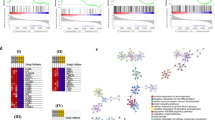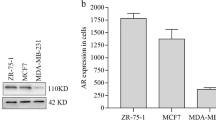Abstract
Hs578T human breast cancer cells are an oestrogen receptor (ER)-negative cell line. Treatment of these cells with 2,3,7,8-tetrachlorodibenzo-p-dioxin (TCDD) resulted in formation of a 6.9 S nuclear aryl hydrocarbon (Ah) receptor complex, which bound to a [32P]dioxin-responsive element in a gel electrophoretic mobility shift assay. However, TCDD does not induce CYP1A1 gene expression or chloramphenicol acetyl transferase (CAT) activity in cells transiently transfected with pRNH11c or pMCAT5.12, which are Ah-responsive plasmids derived from the 5'-flanking region of the human and murine CYP1A1 genes respectively. Restoration of Ah responsiveness was investigated by co-transfecting Hs578T cells with pRNH11c or pMCAT5.12 and plasmids that express the ER (hER), Ah receptor (AhR) and AhR nuclear translocator (Arnt) proteins. ER expression resulted in significantly increased basal CAT activity; however, TCDD did not induce CAT activity in the transiently transfected cells. Expression of the AhR or Arnt proteins did not alter basal or inducible CAT activity. Expression of N- or C-terminal truncated ER in Hs578T resulted in differential regulation of Ah responsiveness. In Hs578T cells transiently expressing the ER, which contains C-terminal deletions (amino acids 282-595), basal CAT activity was also increased; however, Ah responsiveness was not restored. In contrast, transient expression of N-terminal-deleted (amino acids 1-178) ER resulted in a marked decrease in basal CAT activity but a restoration of Ah responsiveness. These results suggest that basal and inducible CAT activity in Hs578T cells transiently transfected with pRNH11c is modulated differentially by ER domains that are present in the N- and C-terminal regions of the ER.
This is a preview of subscription content, access via your institution
Access options
Subscribe to this journal
Receive 24 print issues and online access
$259.00 per year
only $10.79 per issue
Buy this article
- Purchase on Springer Link
- Instant access to full article PDF
Prices may be subject to local taxes which are calculated during checkout
Similar content being viewed by others
Author information
Authors and Affiliations
Rights and permissions
About this article
Cite this article
Wang, W., Thomsen, J., Porter, W. et al. Effect of transient expression of the oestrogen receptor on constitutive and inducible CYP1A1 in Hs578T human breast cancer cells. Br J Cancer 73, 316–322 (1996). https://doi.org/10.1038/bjc.1996.55
Issue Date:
DOI: https://doi.org/10.1038/bjc.1996.55
This article is cited by
-
G protein-coupled receptor 30 ligand G-1 increases aryl hydrocarbon receptor signalling by inhibition of tubulin assembly and cell cycle arrest in human MCF-7 cells
Archives of Toxicology (2016)
-
Growth of a human mammary tumor cell line is blocked by galangin, a naturally occurring bioflavonoid, and is accompanied by down-regulation of cyclins D3, E, and A
Breast Cancer Research (2006)
-
The aryl hydrocarbon receptor constitutively represses c-myc transcription in human mammary tumor cells
Oncogene (2005)



